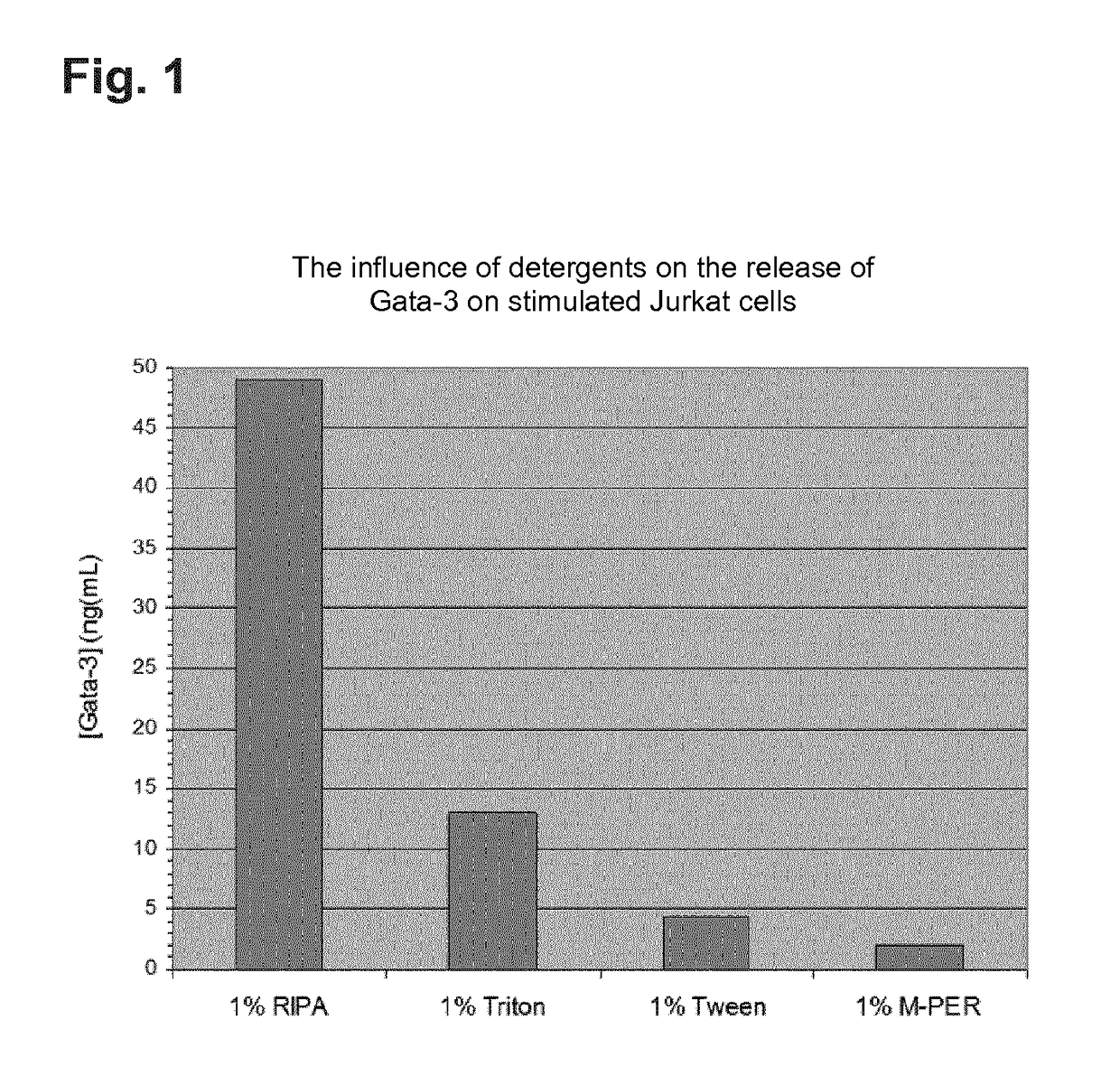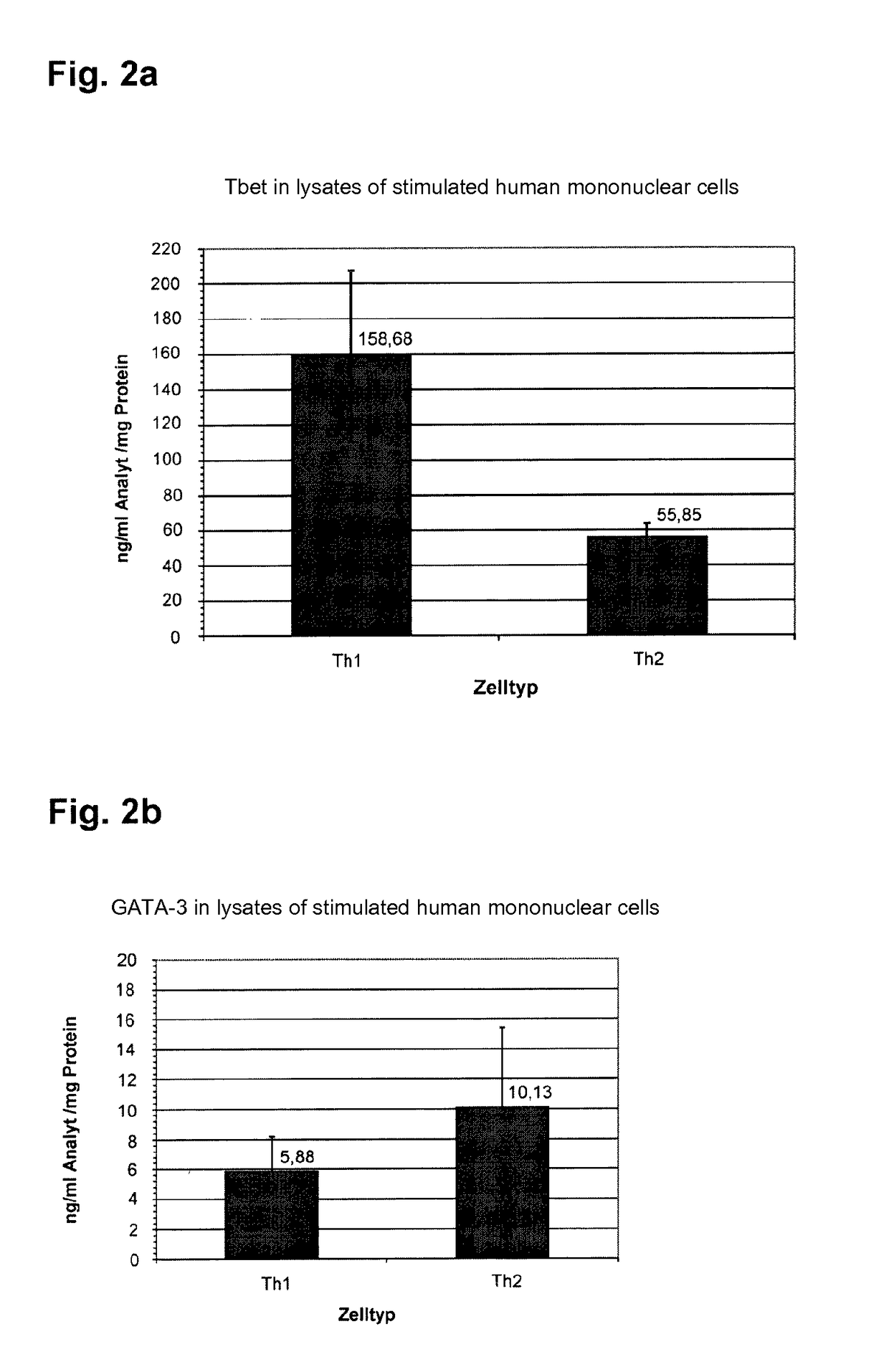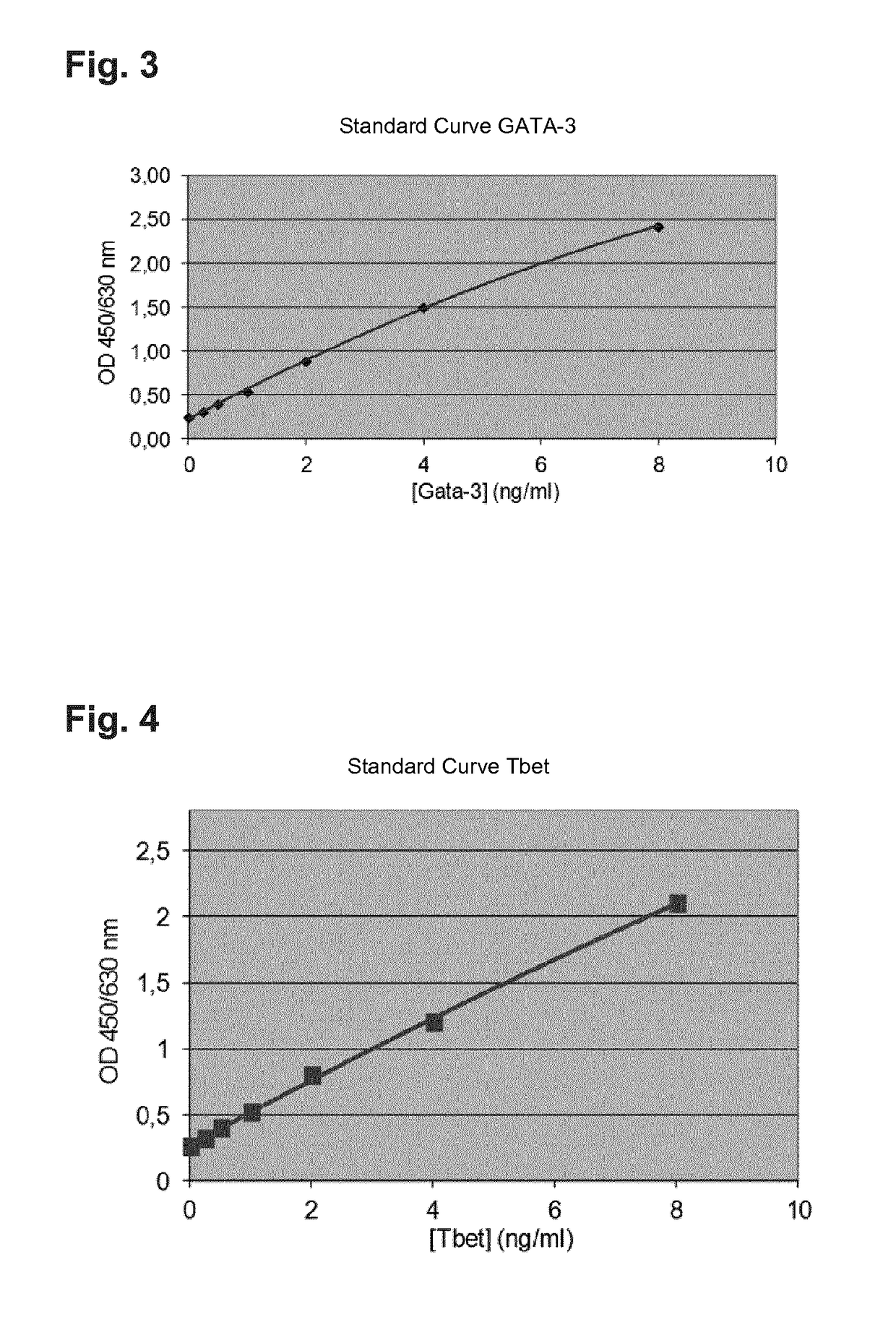Method for diagnosing a molecular phenotype of a patient suffering from an illness accompanied by chronic inflammation
a molecular phenotype and kit technology, applied in the field of molecular phenotype diagnosis of patients suffering from chronic inflammation, can solve the problems of inappropriate inflammatory response, asthma, sustained dysregulation of the immune system, etc., and achieve the effect of inhibiting th1 differentiation and high degree of predictability
- Summary
- Abstract
- Description
- Claims
- Application Information
AI Technical Summary
Benefits of technology
Problems solved by technology
Method used
Image
Examples
exemplary embodiment 1
[0129]GATA-3 and Tbet are proteins that, as transcription factors, have their effect in the cell core of T helper cells of the subtype Th1 and Th2. In order to determine the concentration of these two nuclear proteins in a specified volume of a biological isolate in particular in a specified volume of whole blood, cells which form GATA-3 and Tbet must first be isolated and subsequently lyzed. A direct proof of these proteins from human serum or plasma is not possible, since they are not present there in detectable concentration. An analysis of GATA-3 and Tbet therefore takes place in 4 stages:[0130]Partitioning and isolation of the GATA-3 / Tbet expressing cells from the other cellular components of the whole blood[0131]Disruption of the cells and release of the intracellular / nuclear proteins[0132]Measurement of the concentration of GATA-3 and Tbet and[0133]Standardization of the found concentrations of GATA-3 and Tbet.
Partitioning and Isolation of the GATA-3 / Tbet Expressing Cells fro...
exemplary embodiment 2
[0168]To this end, the wells of a 96 well microwell plate are coated with specific antibodies against GATA-3. After addition of the sample or of a standard, GATA-3 binds on the antibodies on the 96 well plate. After a wash step to remove the non-bound substances a second, specific biotinylated antibody against GATA-3 is added. After an additional wash step to remove the non-bound substances peroxidase marked streptavidin is added. After a last wash step to remove the non-bound substances substrate is added. The color development is terminated after a defined time by adding a stop solution. The intensity of the color development is quantified by a microwell plate reader. The quantification of the samples occurs by a comparison to the included standards of known protein concentration. FIG. 3 shows a corresponding standard curve of a GATA-3 ELISA.
[0169]According to the exemplary embodiment for the performance of the GATA-3 ELISA, the steps relate to the following in detail:[0170]Insert...
exemplary embodiment 4
[0211]In modification of Examples 2 and 3, in accordance with Example 4 Th1 / Th2 cells are enriched by means of magnetic beads coated with cell specific antibodies for the sample preparation. Subsequently the verification of GATA-3 occurred in accordance with the provision according to Example 2.
PUM
| Property | Measurement | Unit |
|---|---|---|
| concentration | aaaaa | aaaaa |
| concentration | aaaaa | aaaaa |
| time | aaaaa | aaaaa |
Abstract
Description
Claims
Application Information
 Login to View More
Login to View More - R&D
- Intellectual Property
- Life Sciences
- Materials
- Tech Scout
- Unparalleled Data Quality
- Higher Quality Content
- 60% Fewer Hallucinations
Browse by: Latest US Patents, China's latest patents, Technical Efficacy Thesaurus, Application Domain, Technology Topic, Popular Technical Reports.
© 2025 PatSnap. All rights reserved.Legal|Privacy policy|Modern Slavery Act Transparency Statement|Sitemap|About US| Contact US: help@patsnap.com



